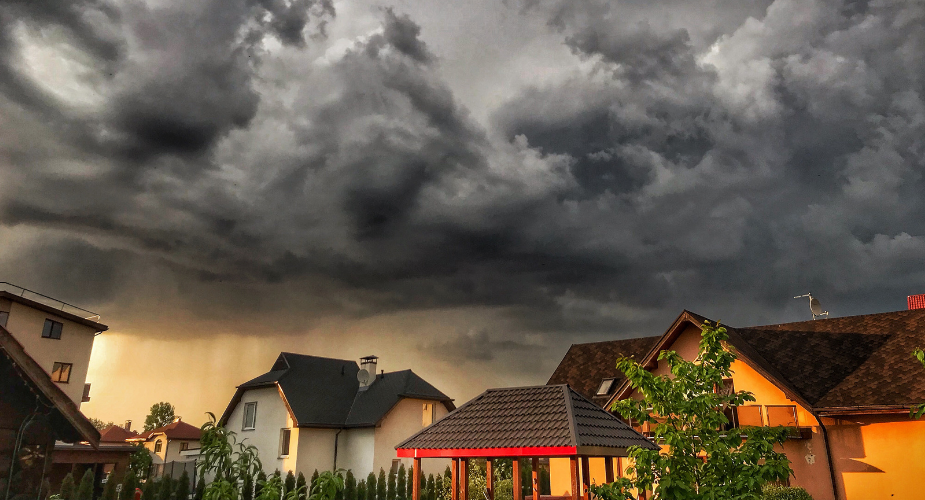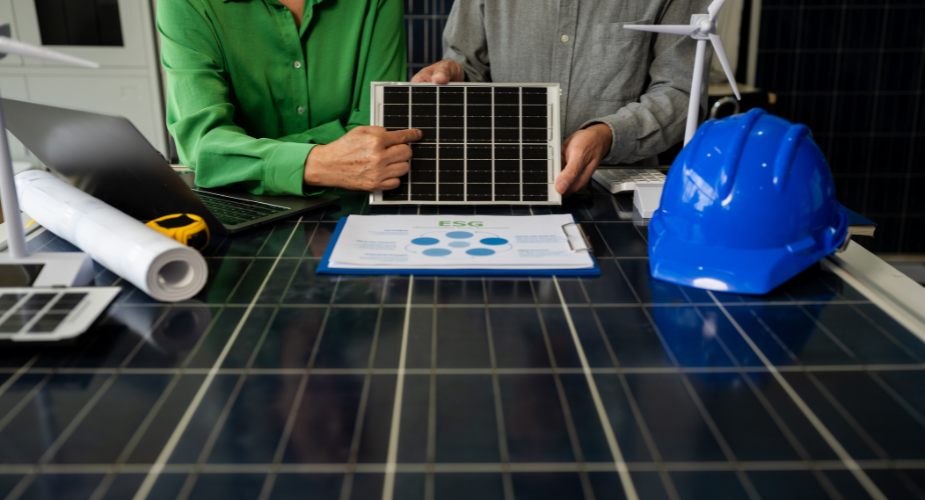More people today are turning to solar power to save money and help the environment. But to get the most out of solar energy, you need a reliable way to store it, and that’s where solar batteries come in. The right battery helps store extra power for later use, giving you more control and independence from the electric grid. In this article, we’ll break down the different types of solar batteries, explain their pros and cons, and help you find the best option for your home or solar setup.

Understanding the Types of Solar Batteries and Finding the Right Fit for Your System
- What Are Solar Batteries?
- Comparison Table: Solar Battery Types at a Glance
- How to Choose the Right Solar Battery for Your System
- How to Choose the Right Solar Battery for Your System
- Recommended Solution: A Whole-Home Backup Battery Built for Solar Power
What Are Solar Batteries?
Solar batteries are used to store or keep extra energy from your solar panels. During the day, your panels often make more electricity than you need. A solar battery saves that extra power so you can use it at night or when the sun isn’t shining.
These batteries are helpful for any home with solar power. If your home is connected to the power grid, a battery can help lower your electric bill. If you're not connected to the grid, the battery becomes your main power source. That’s why it’s important to choose the best types of batteries for solar power.
Main Types of Solar Batteries
There are different types of batteries for solar energy systems, and each one has its own benefits. Choosing the right solar battery depends on your energy needs, budget, and how you plan to use your solar power. Below are the most common battery types used in solar setups:
1. Lithium-Ion Batteries
Lithium-ion batteries are one of the most popular choices today. They are very efficient, last a long time, and don’t take up much space. They are great for homes and businesses because they require little maintenance. While they cost more at the start, they often save money over time.
2. Lead-Acid Batteries
Lead-acid batteries have been around for many years. They come in two types, including Flooded Lead-Acid (FLA), which requires regular care, and Sealed (AGM and Gel), which are easier to maintain. These types of solar batteries are cheaper and easier to find, but they don’t last as long as other options.
3. Flow Batteries
Flow batteries are best for big systems that need a lot of energy over a long time. They last a long time and are safe to use, but they are large and more expensive. These are usually used in off-grid setups or by companies with high power needs.
4. Nickel-Based Batteries
Nickel-based batteries are not very common in homes, but they are strong and work well in very hot or cold weather. Because of their strength, they are used more in special or industrial projects than in everyday solar systems.
Comparison Table: Solar Battery Types at a Glance
To help you choose the best types of batteries for solar power, here’s a quick comparison of the most common battery types. This table shows how they differ in efficiency, lifespan, cost, and more.
|
Battery Type |
Efficiency |
Lifespan |
Cost |
Maintenance |
Ideal Use |
|
Lithium-Ion |
High |
10–15 years |
High |
Low |
Homes, businesses |
|
Lead-Acid (FLA) |
Medium |
3–5 years |
Low |
High (regular checks) |
Off-grid, budget systems |
|
Lead-Acid (AGM/Gel) |
Medium |
4–7 years |
Medium |
Low to medium |
Homes with low energy needs |
|
Flow Battery |
Medium |
10–15+ years |
Very High |
Low |
Large, long-duration systems |
|
Nickel-Based |
Medium to High |
8–10 years |
High |
Medium |
Industrial or extreme environments |
This table gives you a quick and easy way to compare the types of solar batteries. It helps you see which batteries are the most efficient, how long they last, how much they cost, and how much care they need. By looking at these details side by side, you can choose or select the battery that best fits your home, lifestyle, and budget, whether you need backup power, want to live off-grid, or just want to save more on your electricity bills.
How to Choose the Right Solar Battery for Your System
With many types of batteries for solar energy systems available, it’s important to know what to look for when making a choice. Picking the right battery isn’t just about price — it’s about matching the battery to your home’s needs, your location, and your long-term solar goals. Here are the key things to consider:
1. Understand Your Daily Power Needs
Start by figuring out how much electricity your home uses in a day. This helps you select a battery that can store enough energy to power your lights, appliances, or devices when the sun isn’t shining, especially at night or during blackouts.
2. Decide How Long You Need Backup Power
Do you want power for just a few hours, or do you need backup for days? If you live in an area with frequent outages or if you're off the grid, you’ll need a larger battery or even multiple batteries to stay powered for longer.
3. Think About System Size and Future Growth
Some batteries are easy to expand later by adding more storage. If you plan to grow your solar setup — like installing more panels or powering more devices — choose a battery system that can scale with you.
4. Match the Battery to Your Budget and Space
Prices vary depending on the best types of batteries for solar power. Lithium-ion batteries, for example, cost more upfront but last longer. Lead-acid batteries are cheaper but may require more maintenance and space. Always consider how much room you have for installing the battery, especially if you live in a small home.
5. Check Your Climate and Maintenance Preference
Some batteries work better in certain weather. If you live in a very hot or cold area, make sure the battery you choose is designed for those conditions. Also, think about how much time you want to spend maintaining it. Some batteries need regular checks (like flooded lead-acid), while others (like lithium-ion or sealed AGM) are nearly maintenance-free.
6. Look for a Good Warranty and Trusted Brand
Choose a battery with a solid warranty (usually 5 to 15 years) and from a brand known for quality and reliability. This protects your investment and gives you peace of mind that the battery will perform well for years.
Recommended Solution: A Whole-Home Backup Battery Built for Solar Power
When exploring the many types of solar batteries, it’s important to find a system that’s not only reliable but also ready to meet your home’s real-world energy needs. If you’re looking for a complete, high-performing solution, the Nature’s Generator MyGrid 10K Whole Home Generator is a smart choice.
This all-in-one solar battery system is designed for both grid-tied and off-grid living, giving you peace of mind during power outages or periods of low sunlight.
Key Features & Specifications
-
Inverter Output: 10,000 W continuous / 20,000 W peak – Strong enough to run refrigerators, HVAC systems, and critical medical devices.
-
Battery Capacity: 51.2 V, 205 Ah LiFePO4 (≈10,496 Wh) – Offers over 6,000 charging cycles for long-term use.
-
Charging Options: Supports solar input (up to 12 kW), wind (up to 350W), and both 120 V & 240 V AC charging.
-
Transfer Options: Choose between automatic or manual transfer switches for quick, seamless backup power during outages.
-
Design: Slim, portable, and built with wheels – easy to move and set up with a plug-and-play system.
-
Expandability: Add more solar panels or extra batteries as your energy needs grow.
-
Power Output: Delivers both 120 V and 240 V split-phase power – ideal for whole-home use.
-
Ports: Includes multiple outlet types to connect appliances and devices with ease.
Why It’s a Smart Choice
-
Reliable Whole-Home Backup – Easily powers lights, kitchen appliances, air conditioners, and more.
-
Clean & Quiet Operation – No fumes, no noise — safe for indoor use thanks to LiFePO4 technology.
-
Long-Term Value – Lithium iron phosphate batteries offer a long lifespan, saving you money on replacements.
-
Future-Ready – Flexible and expandable, perfect if you plan to grow your solar power setup.
-
User-Friendly – Simple to move, operate, and automatically take over during power outages — no technical skills needed.
Conclusion
To sum it up, selecting the perfect solar battery is really important for maximizing the benefits of your solar power system. With different types of batteries for solar—such as lithium-ion, lead-acid, flow, and nickel-based—it’s important to select one that matches your needs and budget. For a reliable, all-in-one solution, the MyGrid 10K Whole Home Generator stands out with its high capacity, solar compatibility, and easy expandability, making it a wise and excellent choice for both beginners and experienced solar users.






 10,000W LIFEPO4
10,000W LIFEPO4










